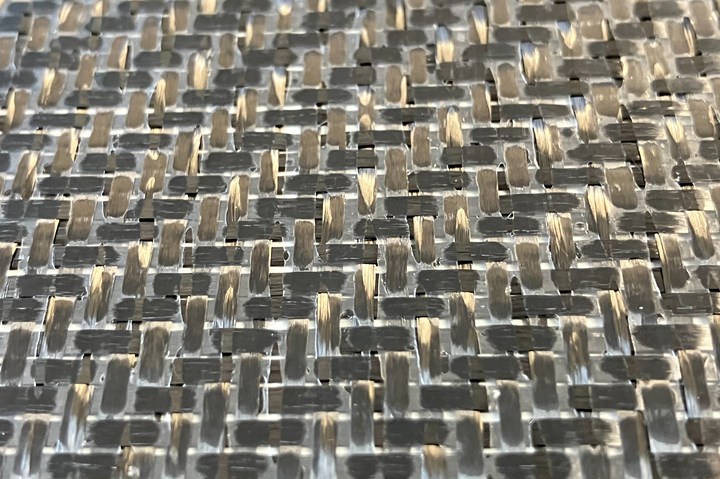Pontacol thermoplastic adhesive films are well-suited for composite preforms
Copolyester- and copolyamide-based adhesive films eliminate the need for sewing threads or binders when stacking laminates while improving the final part’s mechanical properties.
Pontacol (Schmitten, Switzerland) highlights its thermoplastic adhesive films, ideally suited for the production of preforms and/or to improve the mechanical properties of finished composite parts.
The copolyester- and copolyamide-based adhesive films support the production of fiber-reinforced duromer composite components. Individual fibers/layers are laminated with the slit adhesive film, creating a fixation of the dry fiber fabrics or scrims, which Pontacol says ensures a specified fiber orientation for further manufacturing.
With minimal use of materials, an easy-to-use adhesive film eliminates the need for sewing threads or binders in liquid or powder form. The coated fiber cuts can then be reliably stacked into 2D preforms and, due to their thermoplastic properties, connected to one another by temperature or formed into 3D components. The produced preform is suitable for all common resin infusion processes. The resin (e.g., epoxy resin 1500 mPas) is introduced by vacuum or pressure (RTM).
The properties of the adhesive films, which are tailored to the matrix properties, enable an optimal bond between duromer and thermoplastic. In addition to the advantages of simple and efficient production of preforms, the mechanical properties of fiber--reinforced composites are also enhanced. In particular, the service life and susceptibility to damage are said to be improved through increased impact strength and the components can withstand higher mechanical loads.
Related Content
-
Performance resins, putties and structural adhesives
CAMX 2025: Scott Bader illustrates its local and global materials supply availability backed by technical support, as well as a novel composite panels development with Armacell.
-
Composite, adhesive and core solutions focus on performance, reducing carbon footprint
JEC World 2025: Gurit celebrates 190 years with a display of its product variety — from Spabond 400, resins, prepregs and Gurit PET to BalsaFlex, Opticore and other core systems.
-
Mako, PTM&W Industries launch HyperCure composite systems
The Mako resin and adhesive system, paired with PTM&W’s comprehensive materials portfolio, deliver speed, strength and full U.S. supply chain compliance for composite UAS manufacturers.














